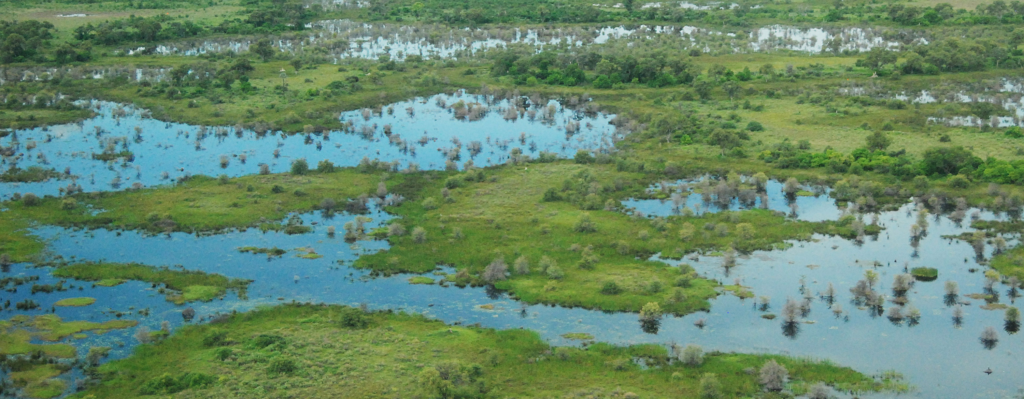Wetlands are important part of environment and its syllabus. Previous Year Question (PYQ) papers are invaluable resources for aspirants preparing for competitive exams like the Union Public Service Commission (UPSC) examinations. In this article we present important PYQ on wetlands.

PYQ on Wetlands
Q- Consider the following pairs: (2022)
Wetland/Lake: Location
- Hokera Wetland Punjab
- Renuka Wetland Himachal Pradesh
- Rudrasagar Lake Tripura
- Sasthamkotta Tamil Nadu
How many pairs given above are correctly matched?
(a) Only one pair
(b) Only two pairs
(c) Only three pairs
(d) All four pairs
Answer- Option B
EXPLANATION
Pair 1: The Hokera Wetland, situated approximately 10 km from Srinagar in Jammu and Kashmir, is erroneously associated with Punjab. It is a natural perennial wetland adjacent to the Jhelum basin.
Pair 2: The Renuka Wetland, correctly identified as the largest natural lake in Himachal Pradesh, features freshwater springs and inland subterranean karst formations. It is fed by a small stream originating from the lower Himalayas and flowing into the Giri River.
Pair 3: Rudrasagar Lake, also known as Rudijala, is accurately placed in Melaghar, Tripura. This Ramsar site is a lowland sedimentation reservoir in the northeast hills, nourished by three perennial streams that discharge into the River Gomti.
Pair 4: Sasthamkotta, contrary to the given information, is situated in the Kollam district of Kerala, not Tamil Nadu. It holds the distinction of being the largest freshwater lake in Kerala and is renowned for its tourist attractions.
Q- “If rainforests and tropical forests are the lungs of the Earth, then surely wetlands function as its kidneys.” Which one of the following functions of wetlands best reflects the above statement? (2022)
(a) The water cycle in wetlands involves surface runoff, subsoil percolation and evaporation.
(b) Algae form the nutrient base upon which fish, crustaceans, molluscs, birds, reptiles and mammals thrive.
(c) 58 15 Wetlands play a vital role in maintaining sedimentation balance and soil stabilization.
(d) Aquatic plants absorb heavy metals and excess nutrients.
Answer- Option A
EXPLANATION
According to The Ramsar Convention, wetlands encompass various types of areas, including marshes, fens, peatlands, and bodies of water, both natural and man-made. They can be permanent or temporary, with water that may be still or in motion, and can be freshwater, brackish, or saline, including coastal areas with water depths of up to six meters at low tide.
Wetlands play a crucial role for humanity, other ecosystems, and the climate by providing essential ecosystem services such as water regulation, flood control, and water purification. Additionally, wetlands help mitigate climate change by absorbing carbon dioxide, thereby aiding in slowing global warming and reducing pollution. This has led to their characterization as the “Kidneys of the Earth.”
Q- Consider the following statements: (2019)
- Under Ramsar Convention, it is mandatory on the part of the Government of India to protect and conserve all the wetlands in the territory of India
- The Wetlands (Conservation and Management) Rules, 2010 were framed by the Government of India based on the recommendations of Ramsar Convention
- The Wetlands (Conservation and Management) Rules, 2010 also encompass the drainage area or catchment regions of the wetlands as determined by the authority
Which of the statements given above is/are correct?
(a) 1 and 2 only
(b) 2 and 3 only
(c) 3 only
(d) 1, 2 and 3
Answer- Option C
EXPLANATION
The Ramsar Convention, established in 1971 in Ramsar, Iran, is among the oldest international agreements aimed at preserving wetland ecosystems’ ecological integrity. Article 4 of the convention mandates each contracting party to promote wetland and waterfowl conservation by establishing nature reserves on wetlands, regardless of their inclusion on the Ramsar List, and ensuring adequate protection for them while they migrate. Contrary to statement 1, it is not obligatory for the Government of India to safeguard and conserve all wetlands within the country’s territory.
Wetlands serve as transitional zones between terrestrial and aquatic ecosystems. Despite the existence of the Wetlands (Conservation and Management) Rules, 2010, issued by the Ministry of Environment and Forests to enhance wetland conservation and management and prevent their degradation in India, this legislation was not formulated based on Ramsar Convention recommendations, as indicated in statement 2.
The objectives of the Wetlands (Conservation and Management) Rules, 2010, include wetland conservation, protection, and management to prevent further deterioration of wetlands in India. These rules define a “wetland” as an area of marsh, fen, peatland, or water, both natural and artificial, with static or flowing water, of various salinities, including marine areas. This definition encompasses inland waters such as lakes, reservoirs, tanks, backwaters, lagoons, creeks, estuaries, manmade wetlands, and their surrounding drainage areas. Thus, statement 3 accurately reflects the rules’ provisions.
Also read about UPSC PYQ on Conservational Reserves.
